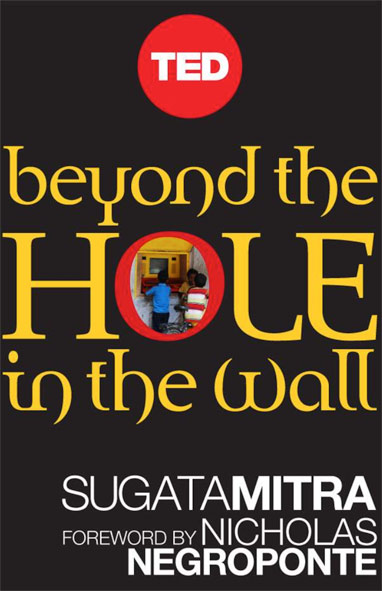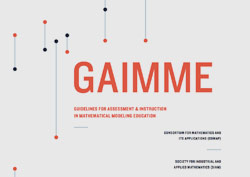
The Way Forward
Unlocking the full potential of education demands more than just imparting knowledge. In an ever-changing world, it requires nurturing analytical thinking, curiosity, and self-awareness in every child.
How do we teach analytical and creative thinking? How do we instill curiosity and a desire for lifelong learning? How do we foster self-awareness? How do we create a global citizenry capable of not just doing, but creating jobs and finding solutions to a host of unprecedented global challenges? Achieving these ambitious goals requires a robust approach to education that reaches all children and fosters the development of the unique strengths and potential of each child.
Education scholar Howard Gardner believes that educators today face daunting challenges, as they need to prepare students for global citizenship, guide students in developing their values, help students to develop a sense of agency, and ensure that agency is wedded to appropriate goals. They also need to help students become comfortable with new technologies, and perhaps most importantly provide students with the tools and guidance that will enable lifelong learning.
As Andreas Schleicher of the OECD emphasizes, “The world economy no longer pays you for what you know, but for what you can do with what you know. … this challenges not only the content of what we teach, but the ways in which we teach.”
Thus, students not only need to understand the fundamentals of mathematics, chemistry, biology, and history; they must also be able to apply their knowledge to solving real-world problems. To do so, young people also need to think critically, and to connect knowledge and ideas across disciplines. A traditional model of teaching which relies on “right answers” imparted from teachers to students is insufficient. Though there is a place for teachers providing information, there is also particular value in encouraging students to take responsibility for their own learning by asking their own questions and forging their own creative solutions.
Mathematics instruction has been called out as an example of a content area needing new approaches. Rather than teaching, testing, and retesting mathematical problems that often may seem to have no practical application, teachers need to present problems that will enable students to learn to use foundational skills, think mathematically and apply their knowledge—an ability referred to as quantitative literacy or “numeracy.”
In a recent series of studies conducted in the schools and markets of Kolkata and Delhi in India, Abhijit Banerjee and colleagues discovered striking differences in the mathematics skills between youngsters who worked in markets compared to those who didn’t. Working children performed well on complex math problems modeled after the problems they encountered in the marketplace even when the amounts or costs of goods were unusual, but did not do as well on more abstract problems which were modeled after math problems used in schools. In contrast, non-working children performed relatively well on the abstract math problems, but less well than the working children on the concrete market-type tasks.
There were also notable differences in the strategies each group used. The working children tended to answer the market-based questions quickly and efficiently, rarely using paper and pencils, and applying shortcuts such as rounding. The researchers characterize this approach as intuitive. In contrast, the non-working children relied heavily on paper and pencil and sometimes required multiple attempts to solve the market-based problems. Overall, the mathematics skills used by the children in the real-world markets did not readily transfer to school-taught mathematics, and vice versa.
This study underscores the gap between practical and academic math skills, suggesting a need for educational approaches that bridge this divide. In the authors’ words, “These findings point to a broader failure of the pedagogical practices in India to make usable connections between intuitive and formal understanding of maths ideas. The pedagogy in place does not teach school students strategies to do maths in real-world settings. It also does not take advantage of the fact that working children have developed such strategies on their own to help them bridge their specific skill sets, well-tailored to the markets, to the skills needed to succeed in a school-based setting.”
The late mathematician and civil rights icon Robert P. Moses founded the Algebra Project some 50 years ago because of his belief that “the absence of math literacy in urban and rural communities throughout this country is an issue as urgent as the lack of registered Black voters in Mississippi was in 1961.” While voting rights was the key to unlocking political access, he argued that math literacy is essential for unlocking economic access.
Social and Emotional Learning
In Counting What Counts, education scholar Yue Shen argues that non-academic skills such as personality, emotions, empathy, curiosity and self-efficacy are crucial to well-being, and as such should be considered the ultimate purpose of education. We now have sufficient knowledge about human development, she says, to develop “practices and systematic efforts in the school environment, so that students can develop the potential they were born with through attentive nurturing that educators are able to provide.”
Students of all socio-economic backgrounds would benefit from an active study of the nature of social interaction and how it can be put to good use inside and outside the classroom.
In a separate chapter of the same book, Brian Gearin cites numerous studies that support the importance of social interactions to student success—not just academic achievement but the reduction of violence and various aspects of student health and wellbeing. Gearin points out that along with collaborative projects, students of all socio-economic backgrounds would benefit from an active study of the nature of social interaction and how it can be put to good use inside and outside the classroom. Schools might teach the principles of social intelligence: how social networks work, how ideas and practices are transmitted from one person to another and adopted by groups, how social capital works and how to develop it, and how our social brains work.
School-based interventions to facilitate social and emotional learning have demonstrable benefits. One meta-analysis of over 400 studies reported that students who had participated in universal school-based social and emotional learning showed “improved academic achievement, school climate, school functioning, social emotional skills, attitudes, and prosocial and civic behaviors, and reduced internalizing and externalizing problems.” [Note: A meta-analysis is a systematic approach to examining a large number of studies on a particular topic to identify what, if any, conclusions are supported across the body of research.]
A separate study reviewed the results of multiple meta-analyses covering over 500 studies on social and emotional learning interventions and found such interventions were associated with “improved personal and social skills, attitudes, positive social behavior, and academic performance, and reductions in problematic behavior, emotional distress, and drug use.”
Learning Together
In the 1970s, social psychologist Elliot Aronson received a call from a colleague, who was then assistant superintendent of schools in Austin, Texas. The colleague was calling because desegregation was not going well in Austin – prejudice and violence were increasing, and the academic achievement and self-esteem of minority students were declining. Aronson accepted his colleague’s invitation to get involved. He began by bringing his team to the schools and simply observing what was happening in the classrooms. It was immediately obvious that the typical classroom situation was inherently competitive—the teacher asked a question and confident students vied to be called upon to answer. Minority students, due to prior poor educational experiences, were at a continuing disadvantage. According to Aronson, “If someone had intentionally designed a classroom structure aimed at making desegregation fail, they could not have done a better job. But it was not intentional. That is simply the way the classroom was structured.”
Over time, Aronson and his team designed an approach they called the “jigsaw classroom.” Central to this team-based approach was that each student would provide a piece of information essential to the successful completion of a project. Students would need to work collaboratively and rely on each other to create the final product. In this model, students not only get to know each other, but also benefit by helping each other, and by understanding each other’s styles, needs, strengths and weaknesses. There is a wealth of solid published research providing the evidence base for this approach, and freely available online resources for teachers seeking to implement it. Dr. Aronson’s work exemplifies how a systematic approach can be effectively applied to generate solutions to tough problems in education.

Improbable Scholars
The Rebirth of a Great American School System and a Strategy for America’s Schools
David L. Kirp
How do we determine if our schools are preparing students for a meaningful future in our society and improve the schools that are not living up to those standards? Explores the current crisis in American education and four districts that have made positive changes.

One World Schoolhouse
Education Reimagined
Salman Kahn
There may be a young girl in an African village with the potential to find a cancer cure. A fisherman’s son in New Guinea might have incredible insight into the health of the oceans. By combining the enlightened use of technology with the best teaching practices, we can foster students who are capable of self-directed learning, deep understanding of fundamentals, and creative approaches to real-world problems.

Beyond the Hole in the Wall
Discover the Power of Self-Organized Learning
Sugata Mitra
Sugata Mitra’s now famous experiments have shone light on the immense capacities that children have for learning in self-composed and self-regulated groups.
In the series: Challenges and Opportunities
Related articles:
Further Reading »
External Stories and Videos

Watch: China Is the Wrong Model
Yong Zhao, Network for Public Education National Conference
Yong Zhao’s lively address brings a thought-provoking perspective on comparing U.S. and Chinese student test scores as a way to evaluate our education systems.

Watch: Experts Debate Merits of PISA
Yong Zhao & Andreas Schleicher, Schools & Academies Show Birmingham 2018
Education scholars Yong Zhao and Andreas Schleicher share their divergent views on the pros and cons of OECD’s international testing program.

The Other Segregation
Whitney Pirtle, The Atlantic
The public focuses its attention on divides between schools, while tracking has created separate and unequal education systems within single schools.

Math with Meaning
COMP & SIAM
Math educators provide helpful guidelines for transforming traditional math equations and problems in a way that gives students as early as pre-K the foundation to tackle open-ended, reality-based questions collaboratively—questions that they find meaningful and can enhance their future. (PDF)

Watch: Our Failing Schools. Enough is Enough
Geoffrey Canada, TED
Why does our education system look the way it did 50 years ago? Millions of students were failing then, as they are now — and it’s because we’re clinging to a business model that clearly doesn’t work. Education advocate Geoffrey Canada dares the system to make systematic shifts in order to help greater numbers of kids excel.

Watch: Do Schools Kill Creativity?
Sir Ken Robinson, TED
Here the entertaining and profoundly moving case for creating an education system that nurtures (rather than undermines) creativity

Watch: Will Our Kids Be Ready for the World in 2050?
Dana Mortenson, TED
World Savvy founder Dana Mortenson explores how teaching and learning in the U.S. is changing, or should change, in our rapidly evolving, interconnected global society. Will our kids will be ready to compete in, and contribute to, a new reality?
